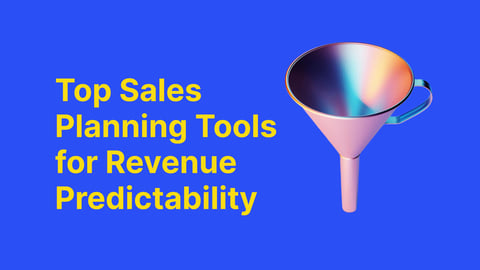In a recent article, I offered a simple and powerful AI framework that sales leaders can use to meet and exceed their goals through better planning, prioritizing, and ideating.
In this article, I discussed planning. Planning is about predicting what will happen simply to ensure you are prepared. For instance, if you know much each person on your team will sell, you can ensure you are prepared with the right inventory and the right staffing levels. Planning lets you right-size your efforts to accomplish your goals with minimal waste.
Prioritizing, on the other hand, is about knowing what will happen so that you can target, or prioritize, profitable opportunities. For instance, if you can predict that a certain salesperson is unlikely to meet quota for a given quarter, you don’t just have to sit back and watch it happen. You can intervene with that person to try to help them boost sales.
Planning is about accepting what will happen. Prioritizing is about identifying the right opportunities to try to change what will happen. I refer to this as “customized managerial decision-making,” and it is an exceptionally valuable way sales leaders can use AI.
Consider the case of customer churn. Prior to AI, most customer churn reduction strategies were reactive – after a customer churned, the company would scramble to try to change the customer’s mind. Some churn strategies were proactive, but too blunt, deployed across an entire customer base – for instance, a company would try to retain customers by offering everyone a free month of service or a discounted price.
With AI, you can prioritize customers.
When you can predict which ones are more likely to churn, you can target the right ones with the right churn reduction initiative. After all, you don’t want to give a discount or free month to try to save a customer who isn’t actually at risk of leaving. That’s just giving away free money.
Prioritizing with AI is at the heart of sales transformation and profitability. AI-savvy sales leaders build entire customer acquisition strategies around AI. They use AI to estimate which prospects are differently likely to convert. They measure the true costs of their sales efforts. They use rigorous calculations to ensure that they spend the right amount of money and effort for each prospect. If the cost of sales exceeds the predicted profit, they move on to other opportunities.
As a simple example, imagine your AI model tells you that a prospect is 30% likely to purchase something for a $100 profit. Smart sales leaders will devote no more than $30 - the expected profit - to the sales process.
“Prioritizing is also at the heart of smart territory management.”
When you know which customers to invest in, you can choose the right resources for the right groupings of customers, whether by geography, industry, named accounts, etc.
In fact, the best sales leaders don’t manage people, prospects or customers. They manage value. Rather than make aggregate decisions across an entire customer base, they use AI to make customized, ROI-positive, decisions for each prospect or customer.
I recently sat with a group of senior sales leaders and heard about the challenges they were facing. They discussed myriad issues that all spoke to prioritizing: setting the optimal price for each customer, determining the right discounting strategies, allocating sales resources across territories, supporting salespeople with the right resources, and more. Prioritizing with AI can be a wonderful solution to all of these. AI has transformed sales from reactive and blunt to proactive and customized. As one sales exec said, “AI points us to gold.”
In my next article, I’ll discuss AI for ideation. Until then, I challenge you to think about how you would benefit from using AI to better prioritize your resources and customize your decisions.
Ready to transform your sales with customized and informed decisions? Get started today!




